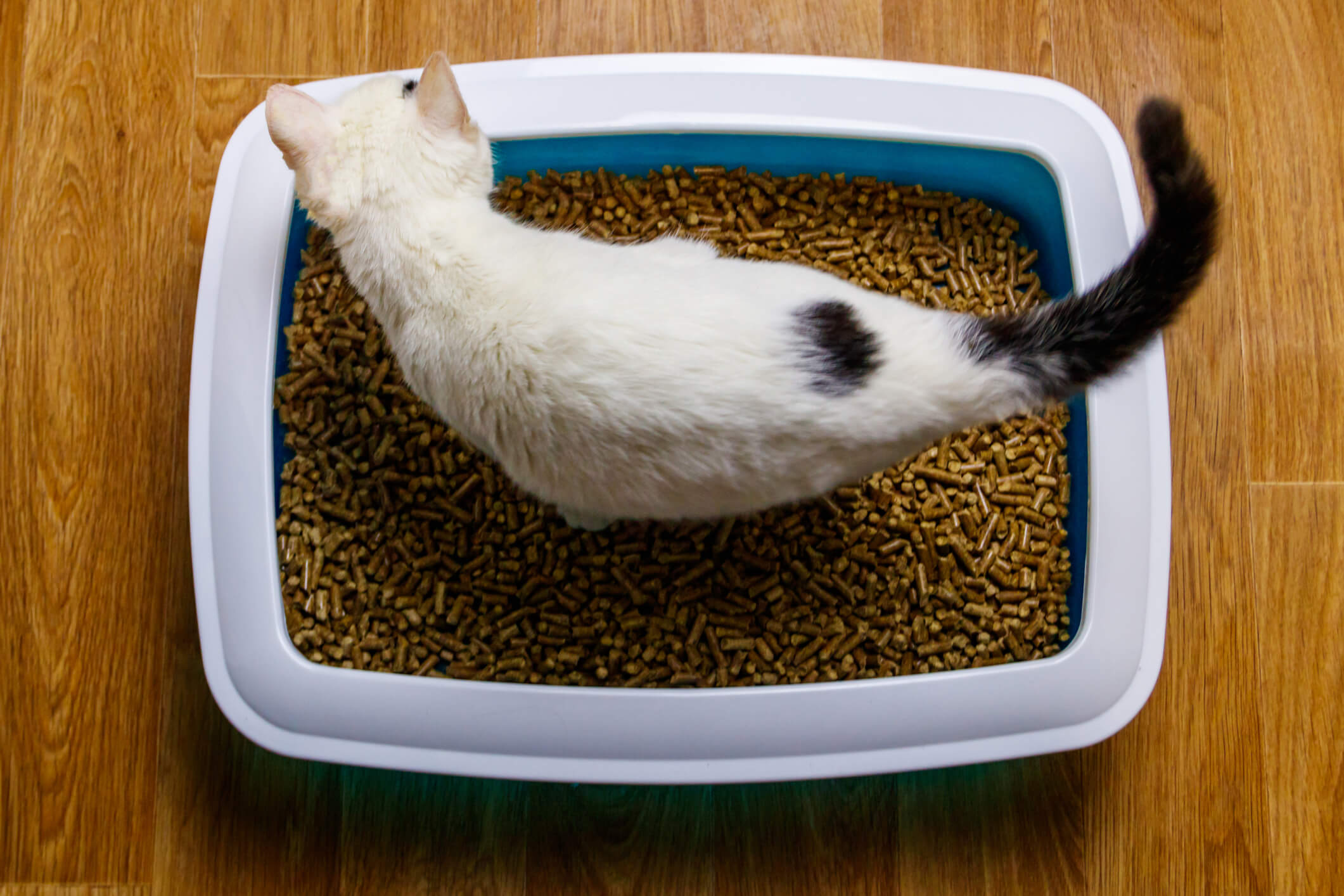
Is it Feline IBD or Lymphoma? How Cat Parents Can Tell the Difference
Cat parents are no strangers to cleaning up puke. Cats experience digestive upset from time to time, so it’s usually nothing to worry about. But vomiting, diarrhea, weight loss and appetite changes are general symptoms that could apply to any number of health problems. Not least among them are inflammatory bowel disease (IBD) and intestinal lymphoma.
These two diseases are so similar, it can seem nearly impossible to tell them apart. Here’s how you can get to the bottom of your kitty’s upset stomach.
What’s IBD and intestinal lymphoma?
Inflammatory bowel disease is exactly what it sounds like—inflammation of the gastrointestinal tract. IBD occurs when an unusually high amount of inflammatory cells flood the digestive system. They make the intestinal lining irritated and inflamed, which stops it from properly absorbing nutrients from food. Although IBD isn’t fatal, it’s a recurring disease that seriously hinders a cat’s health and quality of life.
Intestinal lymphoma is a type of cat cancer affecting the lymphocytic cells. Lymphocytes are immune cells that circulate throughout the body via blood vessels and lymphatic fluid. Lymphoma can occur anywhere in the body, but it’s most common in the gastrointestinal tract among cats. Similar to IBD, lymphoma also creates inflammation along the intestinal walls. Inflammation is the main reason why it’s so difficult to tell the difference between IBD and intestinal lymphoma.
Signs associated with both diseases
IBD and intestinal lymphoma often get mixed up because they share a lot of the same symptoms. Both diseases have similar signs because they affect the same part of the body and are related to inflammation.
The most common shared symptoms include:
- Vomiting
- Diarrhea
- Bloody stool
- Weight loss
- Appetite changes

Cat parents shouldn’t focus on the symptoms themselves. Identifying the signs alone isn’t enough to tell the difference between IBD and intestinal lymphoma. Instead, monitor the symptoms’ severity and how long they last. How your cat experiences their symptoms can offer valuable insight about the underlying problem.
IBD symptoms tend to come and go in cycles. A cat may endure weeks of chronic vomiting and diarrhea, only for these symptoms to completely disappear. Don’t be fooled—IBD can’t heal on its own! IBD symptoms usually flare up again in time. Cats with IBD might also go through cycles of losing weight and gaining it back. Their appetite can improve or worsen, depending on the severity of the inflammation.
On the other hand, symptoms of intestinal lymphoma don’t come and go. Like all forms of cancer, lymphoma will get worse if it’s left untreated. This means a cat’s symptoms will get worse, too. Over time, cats with intestinal lymphoma will experience more frequent and severe vomiting, diarrhea and weight loss. Symptoms of intestinal lymphoma will only improve with medical intervention. The cat is also unlikely to regain any lost weight.
Another thing to consider is whether your cat has been vaccinated against the feline leukemia virus (FeLV). This is a viral infection that drastically increases a cat’s chances of developing lymphoma later in life. The feline leukemia vaccine reduces the risk of lymphoma, but it’s not enough to completely rule out that diagnosis. Vets are more likely to diagnose lymphoma in cats that were previously infected with the feline leukemia virus.
Consult your vet for a diagnosis
Since the symptoms of lymphoma and IBD are nearly identical, cat parents should bring their pet to the vet for a professional diagnosis. You won’t know whether it’s IBD or intestinal lymphoma until a vet runs tests. A diagnosis is necessary before attempting to treat the problem.
The most accurate way to diagnose a gastrointestinal problem is by conducting a surgical or endoscopic biopsy. A surgical biopsy involves cutting into the cat’s abdomen to collect a sample of inflamed tissue from the digestive system. An endoscopy is less invasive because the vet inserts a flexible camera into the mouth or rectum to examine the inflamed tissue. Both procedures are completed under general anesthesia.
After the biopsy, your vet will examine the tissue sample beneath a microscope. This is to determine which type of cell is causing the inflammation. If inflammatory cells are found in the tissue, your vet can reasonably conclude that IBD is the underlying problem. If they find a high level of cancerous lymphocytes, the likely diagnosis is intestinal lymphoma.
Cat parents won’t be able to tell on their own whether IBD or lymphoma is to blame. Only one thing is clear—your kitty is in a lot of pain. Regardless of the cause, bring your fur baby to the vet as soon as symptoms arise. Your vet can help you diagnose the underlying problem and improve your cat’s chances of recovery.


